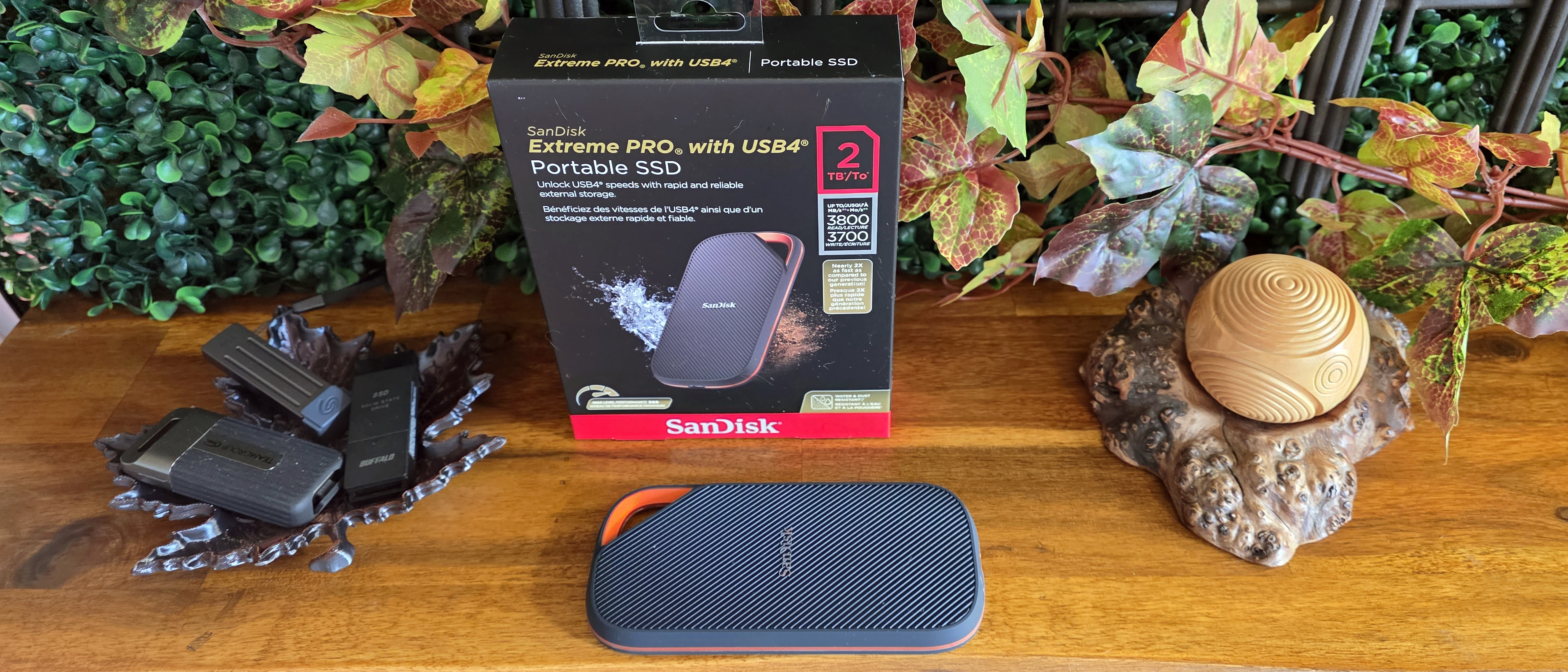Tom's Hardware Verdict
SanDisk’s Extreme Pro USB4 drive boasts a premium design and good, bursty performance. But it’s not the best performer among recent drives we’ve tested, especially when it comes to the kind of sustained writes that are often key for pro users.
Pros
- +
Attractive, premium shell
- +
Fast read speeds
- +
5-year warranty
Cons
- -
Write speeds should be better for its price
- -
Large compared to other external SSDs
- -
Limited to just two capacities
Why you can trust Tom's Hardware
SanDisk has been around since the very beginnings of flash memory, and the company has been pushing out external SSDs for over a decade, with at least one big bump along the way. But after recently splitting from WD, the company is still pushing out impressive drives, with the internal M.2-based SN8100 landing as our top PCIe 5.0 pick on our list of the best SSDs.
Does SanDisk have another hit on its hands with its latest external drive, the somewhat awkwardly named "Extreme Pro with USB4"? It’s certainly a nice-looking drive that feels premium (though it is kinda large). And the promised speeds of up to 3,800 MB/s reads and 3,700 MB/s writes look good on paper, as does the 5-year warranty (which may assuage some lingering fears about the company’s drive reliability issues).
We’ll have to put the drive through our usual slate of benchmark testing to see if it earns its fairly high asking price. The 2 TB model we tested currently sells for $279, which is about $70 more than our current favorite USB4 SSD, Corsair’s EX400U. Before we get to testing, here are the specs for the drive, direct from SanDisk:
SanDisk Extreme Pro USB4 Specifications
Product | 2 TB | 4 TB |
Interface / Protocol | USB4 (40 Gbps) | USB4 (40 Gbps) |
Included | USB Type-C cable | USB Type-C cable |
Sequential Read | Up to 3,800 MB/s | Up to 3,800 MB/s |
Sequential Write | Up to 3,700 MB/s | Up to 3,700 MB/s |
Dimensions | 140 x 68/58 x 11.94 mm | 140 x 68/58 x 11.94 mm |
Weight | 172.37 grams | 172.37 grams |
Warranty | 5 years | 5 years |
Price |
SanDisk Extreme Pro USB4 design
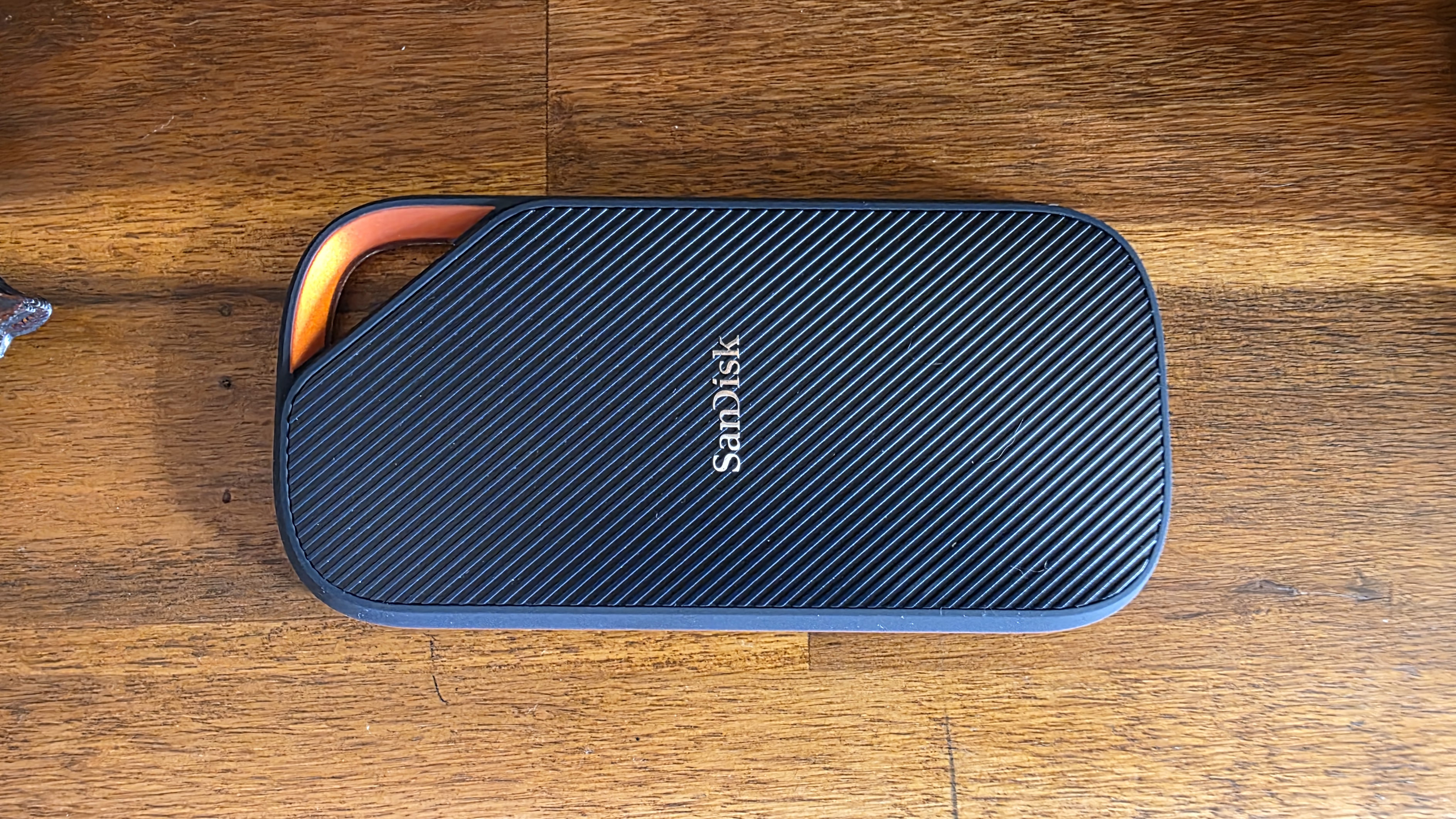
SanDisk doesn’t try to lure you in with Adobe trials like LaCie, or include extra cables or accessories that you’ll probably lose before you find a use for them. And honestly, that’s fine. Inside the box, you’ll find the drive, a roughly 11-inch USB-C-to-USB-C cable, and the usual paperwork – that’s it.
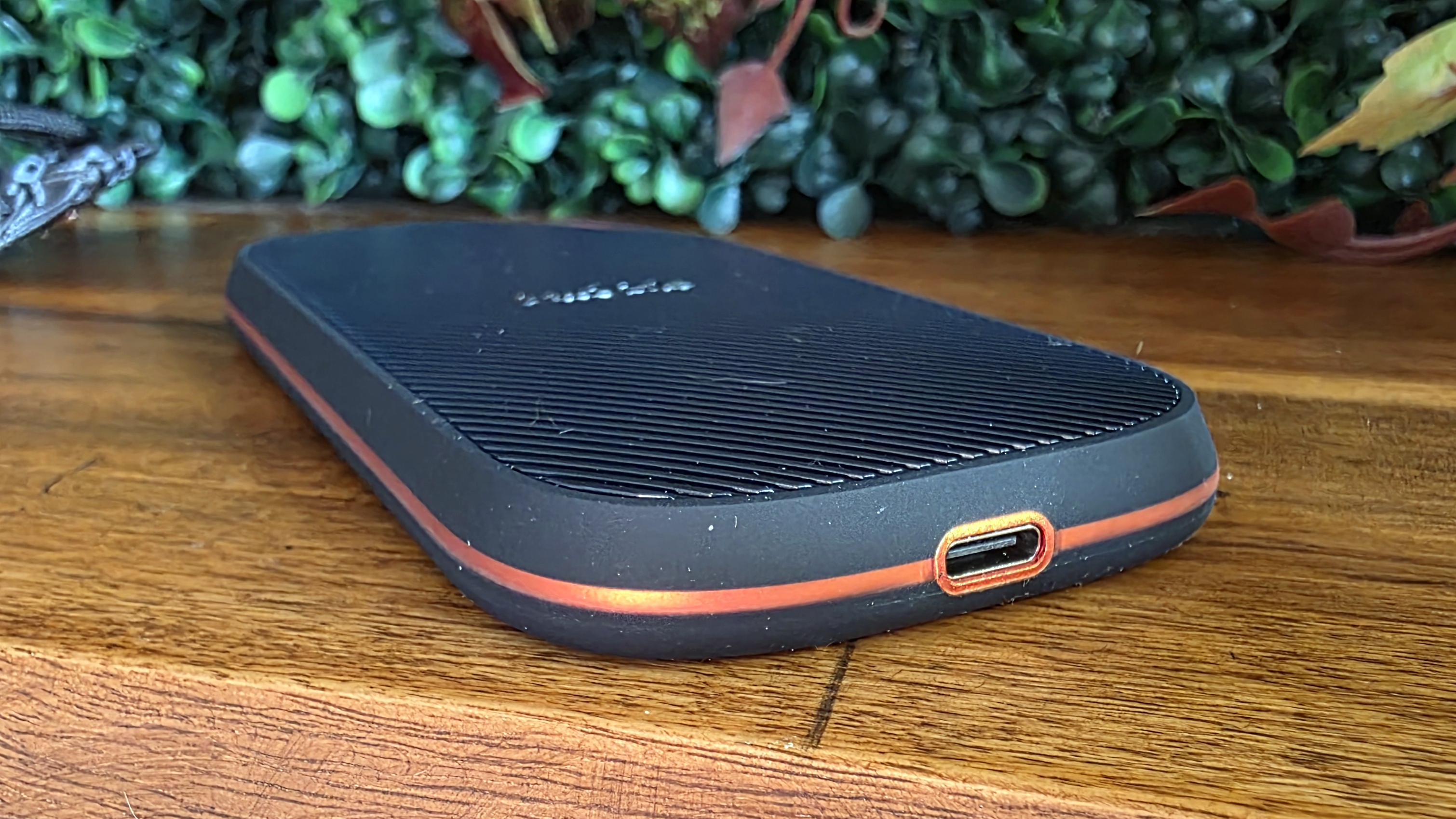
The drive itself is coated in a soft-touch rubber on the sides and bottom, with diagonal ridges along the front, orange accents along the edges, and a hole in one corner so you can clip it to a bag or something else with a carabiner. The USB Type-C port resides on the bottom edge, also circled in orange.
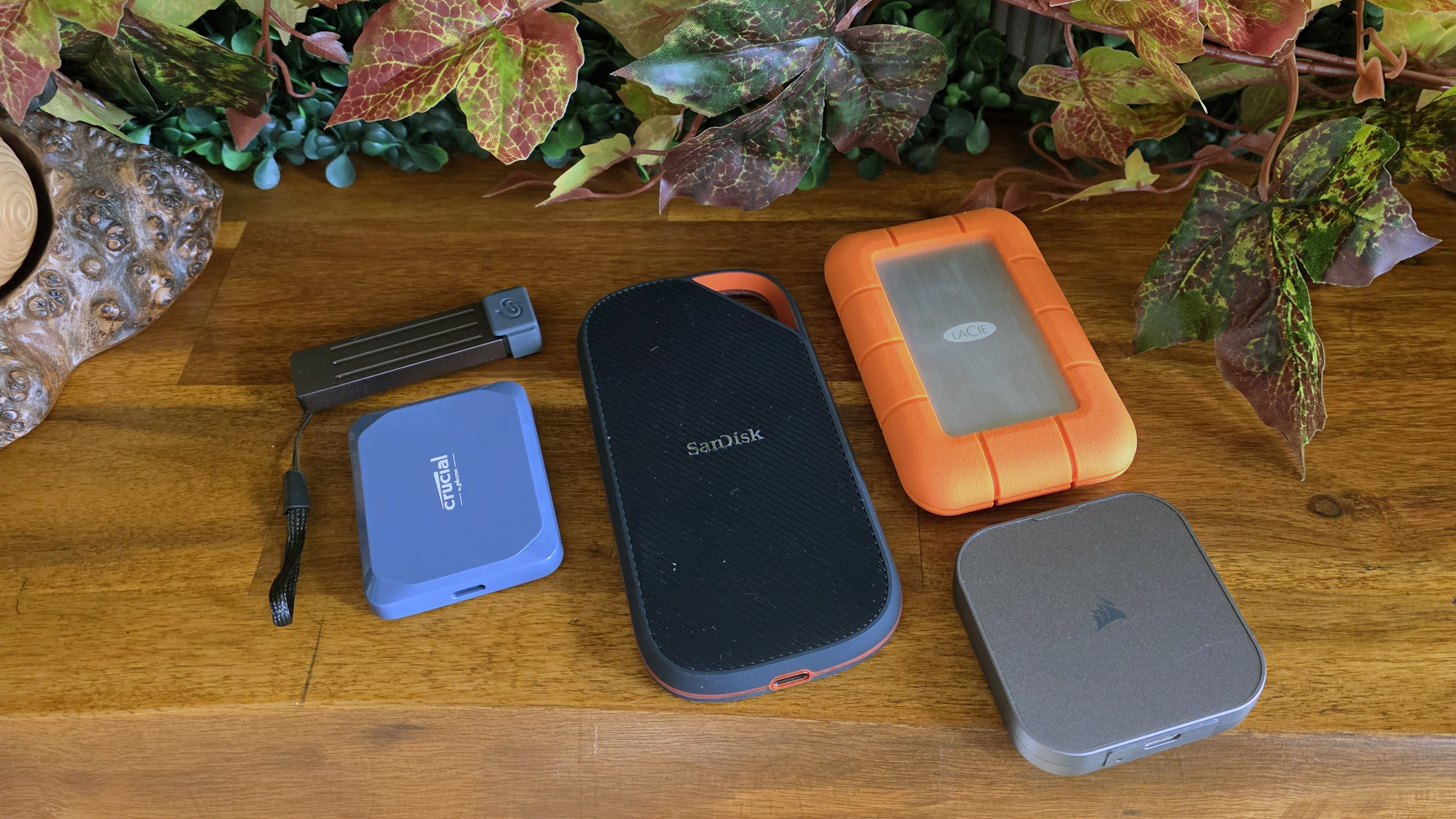
Overall, the drive looks and feels premium, arguably more so than any drive I’ve tested in years. SanDisk says it has an IP65 rating for water resistance and that it should survive drops up to two meters. That said, while it’s thin at under 12 mm, it’s substantially bigger and heavier (172.37 grams) than most other modern drives.
Comparison drives
Corsair’s competing EX4000U USB4 drive weighs about half as much (92 grams) and is also about half the size, though it is a little thicker and certainly doesn’t feel as nice as the SanDisk drive. LaCie’s Rugged SSD4 (also a USB4 drive) is bulkier, thanks to its orange rubber life jacket, but still shorter than the SanDisk drive and also lighter, at 109 grams.
Get Tom's Hardware's best news and in-depth reviews, straight to your inbox.

It’s not like the SanDisk drive is going to weigh your bag down or won’t fit in most pockets. But it is the largest external single-drive SSD I’ve reviewed or used in years.
Storage testbed
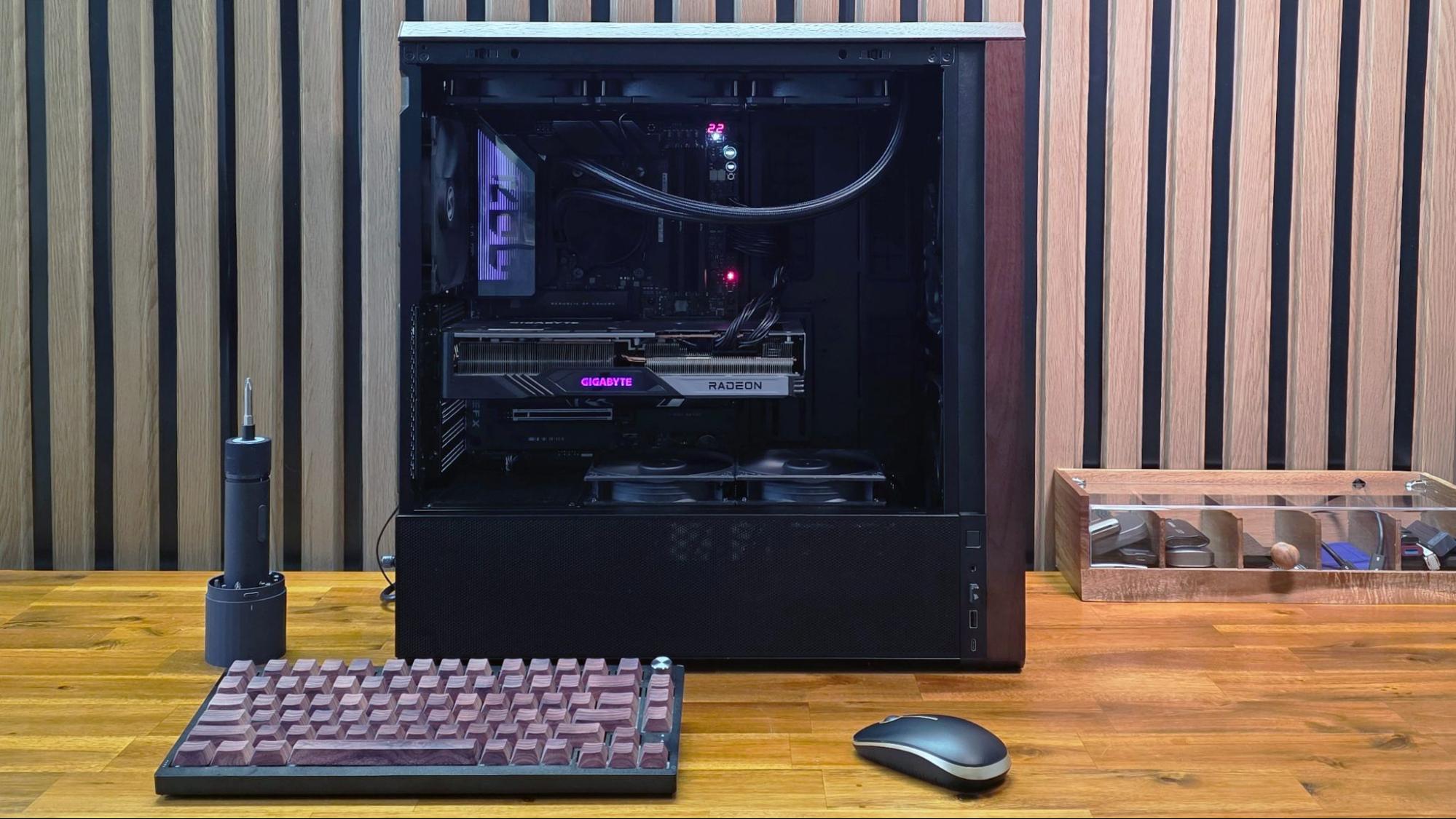
In early 2025, we updated our external storage testbed to an AMD Ryzen 7600X-based PC with an Asus ROG Crosshair X870E Hero motherboard, installed in Lian Li’s Lancool 217 case. This was done in part because we needed a system with native USB4 support for upcoming drives (like this one).
All the drives in the charts below have been re-tested on the new X870E system, with the exception of the final Iometer sustained sequential test. That benchmark is less about top speed and more about how long a drive can write before depleting any fast cache onboard. We also updated to CrystalDiskMark 8, rather than the older (and non-comparable) version 7 we used on the previous testbed.
Trace Testing - PCMark 10 Storage Benchmark
PCMark 10 is a trace-based benchmark that uses a wide-ranging set of real-world traces from popular applications and everyday tasks to measure the performance of storage devices.
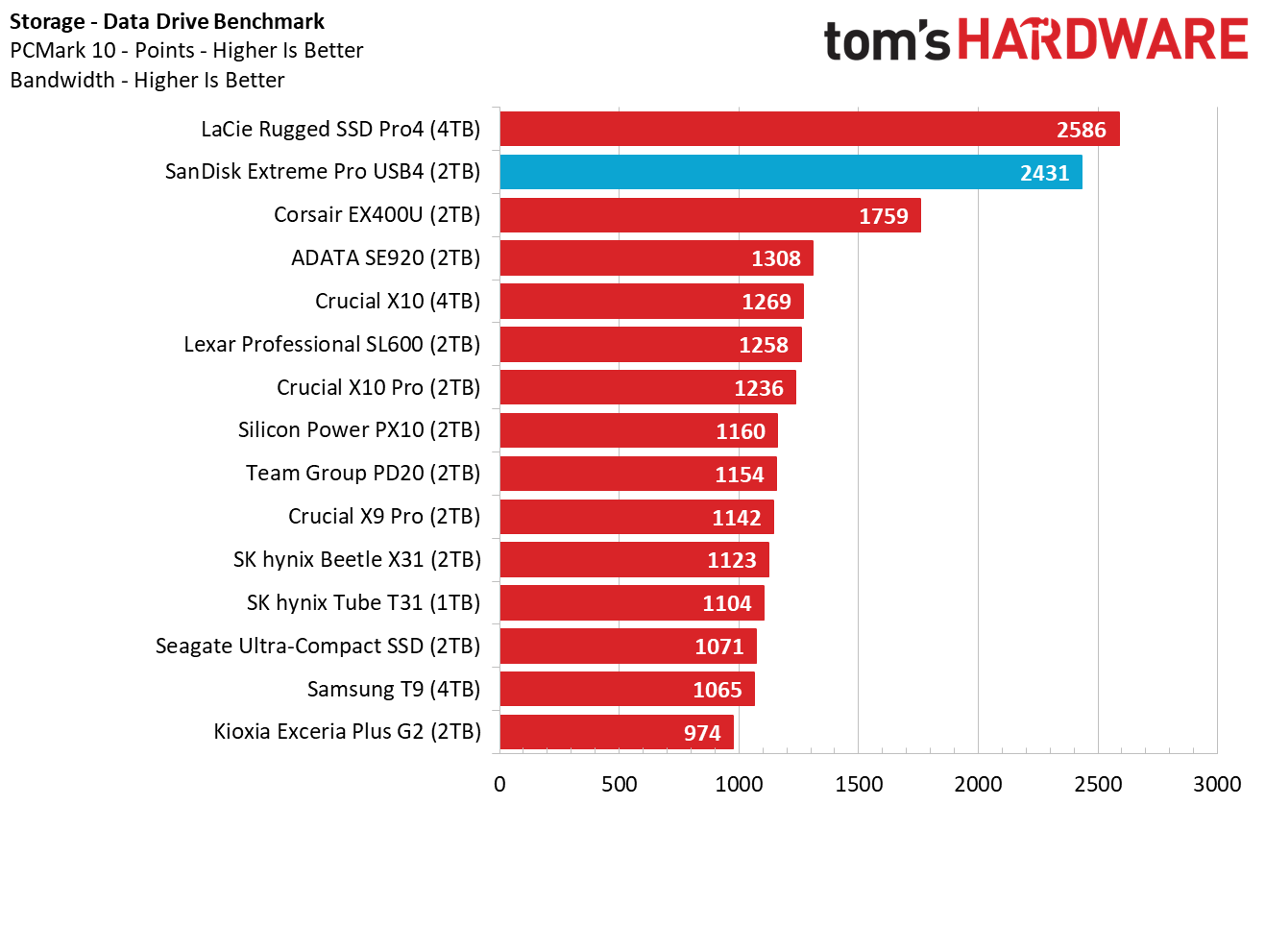
In this first test, the LaCie SSD4 landed first, but SanDisk’s Extreme Pro USB4 wasn’t far behind, while Corsair’s USB4 drive was a distant third. But that’s not a dynamic that will hold for most of our tests, especially when it comes to write speed.
Transfer Rates – DiskBench
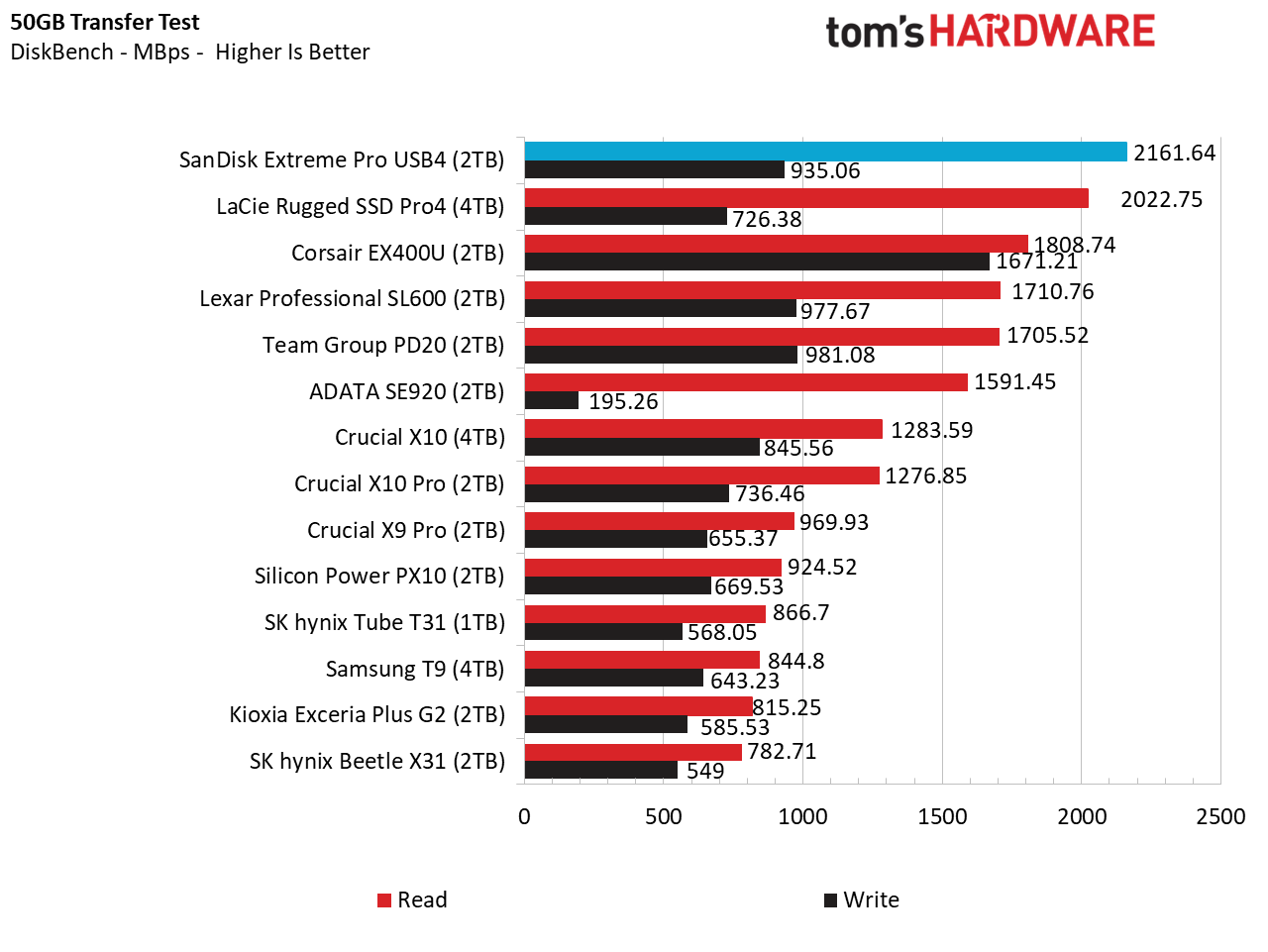
In this real-world file transfer test, SanDisk’s drive comes in first on reads, followed by LaCie’s USB4 drive, and then Corsair drive. But note that the Corsair EX400U nearly doubles the other two drives when it comes to writing files. This disparity was big enough that I ran the test on the SanDisk drive several times and, after achieving similar results, pulled out the Corsair and re-ran it on this test. Again, the results were effectively the same. At least in this real-world 50GB write test, the Corsair drive is significantly speedier.
Synthetic Testing CrystalDiskMark
CrystalDiskMark (CDM) is a free and easy-to-run storage benchmarking tool that SSD companies commonly use to assign product performance specifications. It gives us insight into how each device handles different file sizes. We run this test at its default settings.
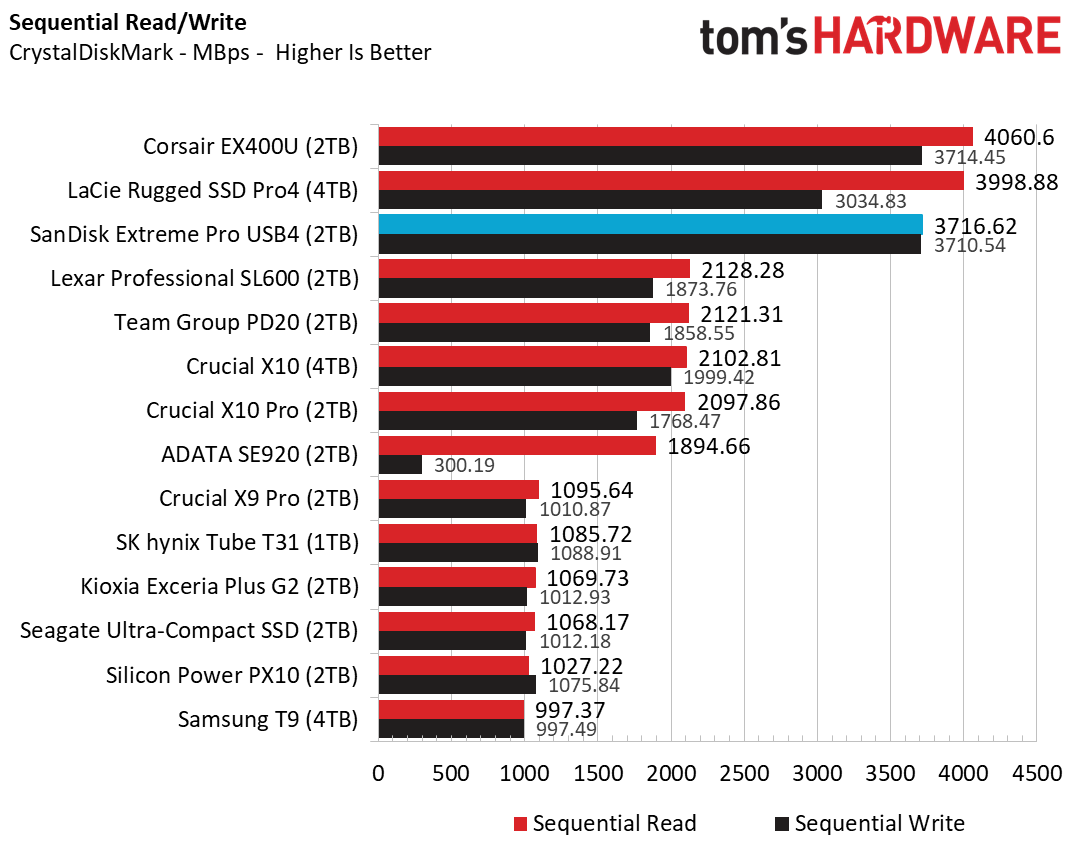
Switching back to synthetic tests, the SanDisk drive drops to third when it comes to sequential reads, behind the Corsair and the LaCie. But the SanDisk drive nearly matched its first-place competitor on sequential writes.
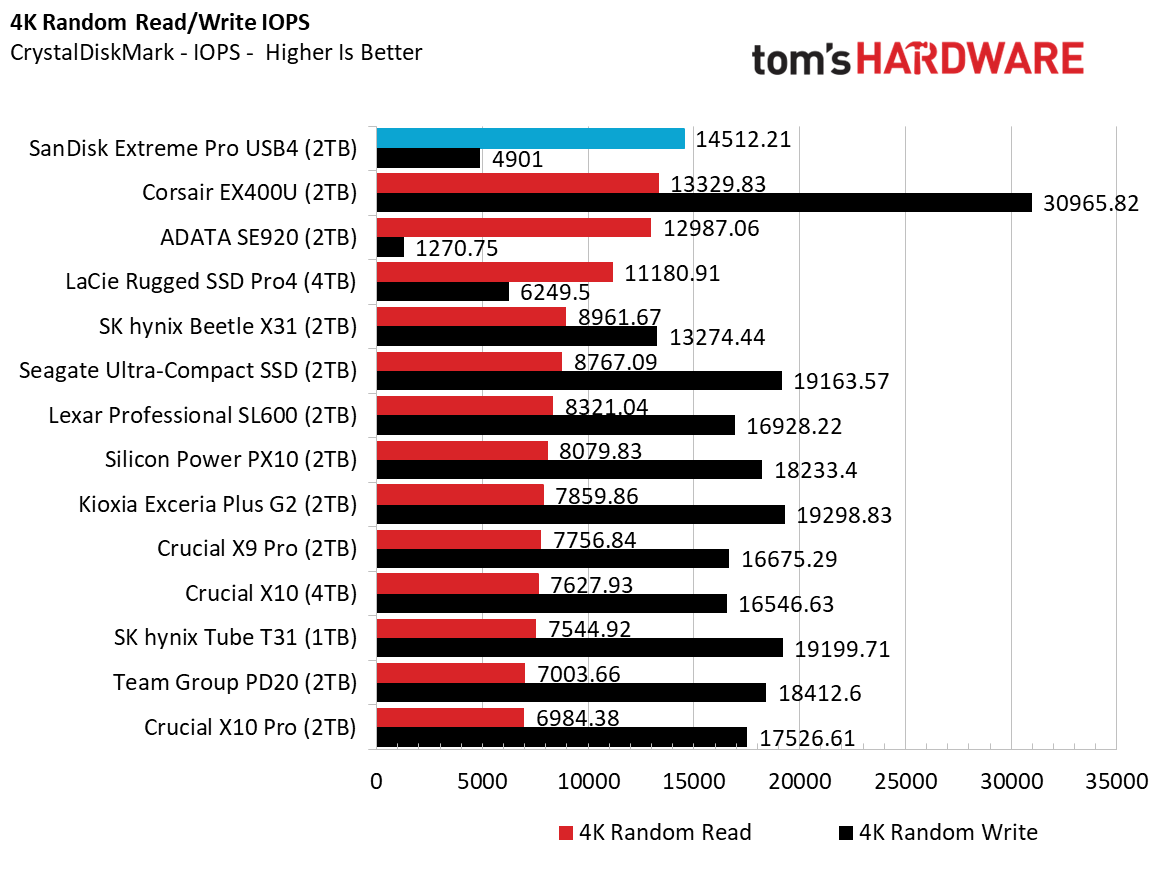
Small file read performance sees SanDisk’s Extreme Pro USB4 on top in reads, with the LaCie Rugged SSD Pro4 slipping to fourth place. But again, the Corsair drive stands out in write performance here, with the SanDisk drive surprisingly in second-to-last place.
Sustained Write Performance
A drive's rated write specifications are only a piece of the performance picture. Most external SSDs (just like their internal counterparts) implement a write cache, or a fast area of flash, programmed to perform like faster SLC, that absorbs incoming data.
Sustained write speeds often suffer tremendously when the workload saturates the cache and slips into the "native" TLC or QLC flash. We use Iometer to hammer the SSD with sequential writes for 15 minutes to measure the size of the write cache and performance after the cache is saturated.
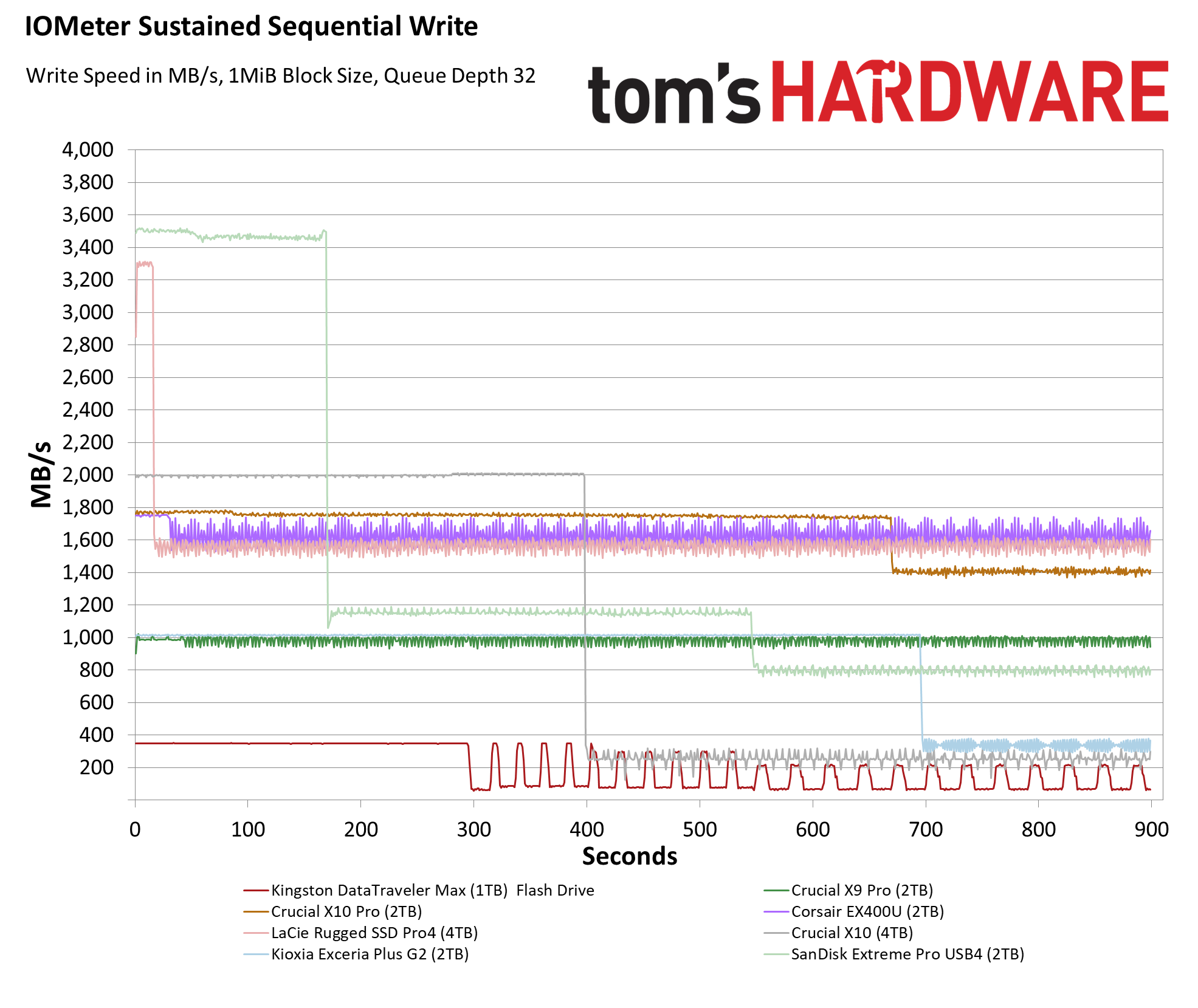
Immediately out of the gate, the SanDisk drive looks stunning, writing just below 3,500 MB/s, with only the LaCie Rugged SSD Pro4 getting close, starting just below 3,300 MB/s. But both drives’ performance falls off pretty quickly, with the LaCie dropping to the 1,600 MB/s range after less than 20 seconds. The SanDisk drive hung on at top speed for almost three minutes before dropping to a slower speed of around 1,100 MB/s for about five more minutes, then dropping again, to around 800 MB/s for the rest of our test.
The Corsair EX4000U, meanwhile, never managed to write above just 1,800 MB/s, and dropped to the 1,550-1,650 range after about 20 seconds – but it maintained that speed through the duration of our test (and even longer for a full 30 minutes), while the SanDisk drive was slower than the Corsair after just a few minutes of sustained writes.
In short, while the SanDisk drive is much faster at bursty and mainstream workloads, the Corsair drive is technically faster for big, drive-filling tasks that tend to fall into the “pro” category. That’s a shame from a marketing perspective, given that SanDisk has put Pro in its USB4 drive’s name, while Corsair has not.
Bottom line

SanDisk’s Extreme Pro USB4 drive is fast for mainstream tasks, and I’d argue it’s one of the nicest-looking (and feeling) drives I’ve tested in years. But it costs substantially more than both the Corsair and LaCie USB4 drives we’ve tested recently, while often falling behind them in real-world writes. That makes SanDisk’s USB4 drive hard to recommend, especially to the kind of “pro” users that SanDisk’s marketing is attempting to appeal to.
The Extreme Pro With USB4 is fine for carrying around and backing up files. But if you are often filling up your drive with high-resolution video or images and dumping them to local storage via USB4 or Thunderbolt, you’re better off looking elsewhere. Corsair’s competing EX400U remains our favorite USB4 SSD for most people – helped by the fact that it costs about $70 less at the same 2TB capacity.
After a rough start with the Mattel Aquarius as a child, Matt built his first PC in the late 1990s and ventured into mild PC modding in the early 2000s. He’s spent the last 15 years covering emerging technology for Smithsonian, Popular Science, and Consumer Reports, while testing components and PCs for Computer Shopper, PCMag and Digital Trends.
